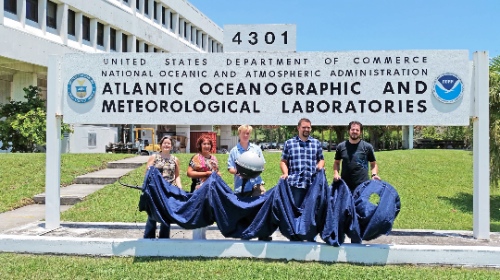The earth is warming, but temperatures in the atmosphere and at the sea surface that steadily rose in the last half-century have leveled off and slowed in the past decade, causing the appearance of an imbalance in Earth’s heat budget. Scientists are looking into the deep ocean to determine where this additional heat energy could be stored, and recently traced a pathway that leads to the Indian Ocean.
In a study published May 18 in Nature Geoscience, oceanographers from the University of Miami’s Rosenstiel School, Cooperative Institute for Marine and Atmospheric Studies (UM/CIMAS), NOAA and their colleagues identified a key mechanism that explains the apparent contradictions associated with the recent global warming hiatus. Building upon previous studies that suggest enhanced heat uptake in the tropical Pacific Ocean as the major source of the imbalance, the new study tracked this excess heat from the Pacific to the Indian Ocean via Indonesian pathways.
Since the 1950s, global average surface air temperatures have increased steadily, with the warming attributed to greenhouse gases originating from human activities. Since the start of the 21st century however, global surface warming has almost stalled. This contradicts with the amount of net radiation entering Earth at the top of the atmosphere, which continues to suggest an increasingly warming planet. The slowdown of surface warming was the focus of a series of studies that sought to identify and track the causes of this process.
Researchers initially pegged the tropical Pacific as the major source of heat uptake, theorizing that the basin was storing a large portion of the global heat imbalance over the last decade, thereby causing the atmosphere to warm less. Natural climate variability processes such as El Niño/Southern Oscillation (ENSO), a cycle of warm and cold sea surface temperature in the tropical Pacific Ocean, drive wind patterns and ocean currents across the region. Since the turn of the century, the cold phase of ENSO, known as La Niña, has persisted, increasing the uptake of warm surface waters in the subtropics. This process and others have enhanced the uptake of heat from the atmosphere to the top 2,000 ~ 3,000 feet of the ocean.
While uptake in the Pacific as a result of La Niña-like conditions may have answered the initial question regarding the heat missing from the atmosphere, findings from the recent study indicate that Pacific heat has been slowly decreasing and that the excess heat has been transported elsewhere.
“When I first saw from the data that Pacific heat was going down, I was very curious and puzzled,” says the study’s lead author Dr. Sang-Ki Lee, a climate researcher with UM/CIMAS and NOAA’s Atlantic Oceanographic and Meteorological Laboratory.
Results from the study suggest that the excess heat is being stored in the Indian Ocean, which has seen an unprecedented rise in heat over the past decade. Researchers studied observations going back to 1950 and noticed that the Indian Ocean heat uptake stayed relatively low until 2003 or so. From that point forward, observations indicated that heat began to build in the Indian Ocean and there was no evidence to support that the source was from the atmosphere. By running simulations from a global ocean-sea ice model to track the pathway of heat, researchers found that the heat originally stored in the Pacific was transported by a strong ocean current, known as the Indonesian Throughflow, and ended up in the Indian Ocean. The heat flux into the Indian Ocean via the Indonesian pathway means that the Indian Ocean is increasingly important in modulating global climate variability and is now home to 70 percent of all heat taken up by global oceans during the past decade.
The study helps resolve an important debate regarding the warming hiatus. Scientists theorize the Pacific played a role in the warming hiatus, yet all observations indicated that total heat in the Pacific basin had not increased as expected. This study reveals that the Pacific was an intermediary in the heat storage process, but not the final destination, explaining the lack of change in Pacific heat.
Lee has several thoughts about future effects of this warm deep ocean water. In its current location, Lee said it’s possible that the warm water in the Indian Ocean could affect the Indian Monsoon, one of the most important climate patterns in the world that affects more than 1 billion people. What it means for future El Niño cycles is not immediately clear. However, Lee noted that the warm water in the western Pacific, which provides the energy needed to produce intense El Niño events, has been partially discharged into the Indian Ocean, suggesting weaker El Niño events in the near future. Lee also indicates that the heat content is likely to continue moving with global ocean currents and may find its way into the Atlantic basin in the coming decades.
“If this warm blob of water in upper Indian Ocean is transported all the way to North Atlantic, that could affect the melting of Arctic sea ice,” Lee said. “That can also increase hurricane activity and influence the effects of drought in the U.S, but future studies are required to validate these hypotheses.”
Originally Published in May 2015 by Edward Pritchard
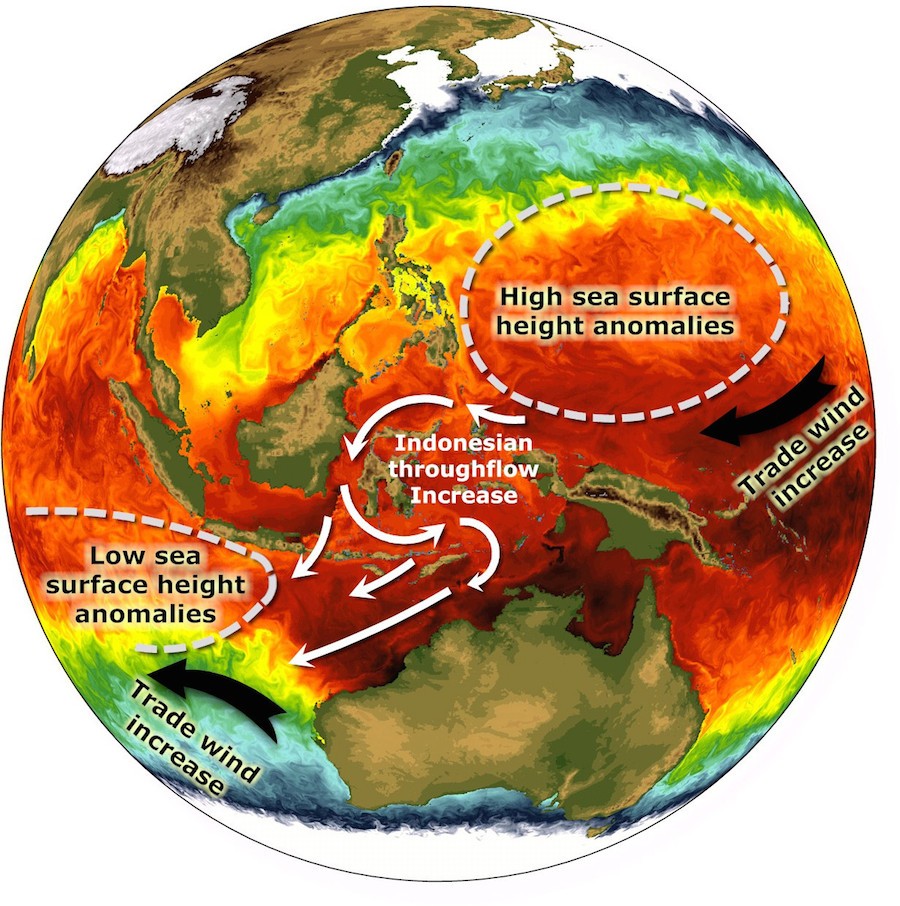
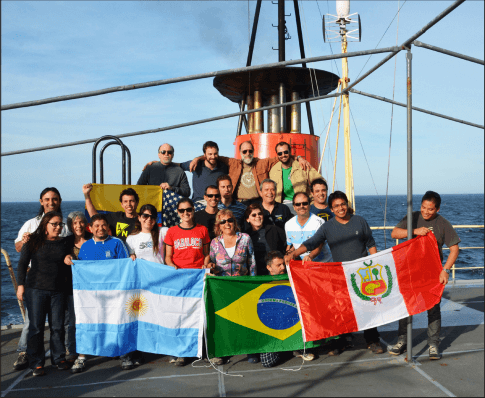
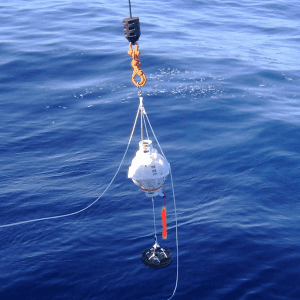
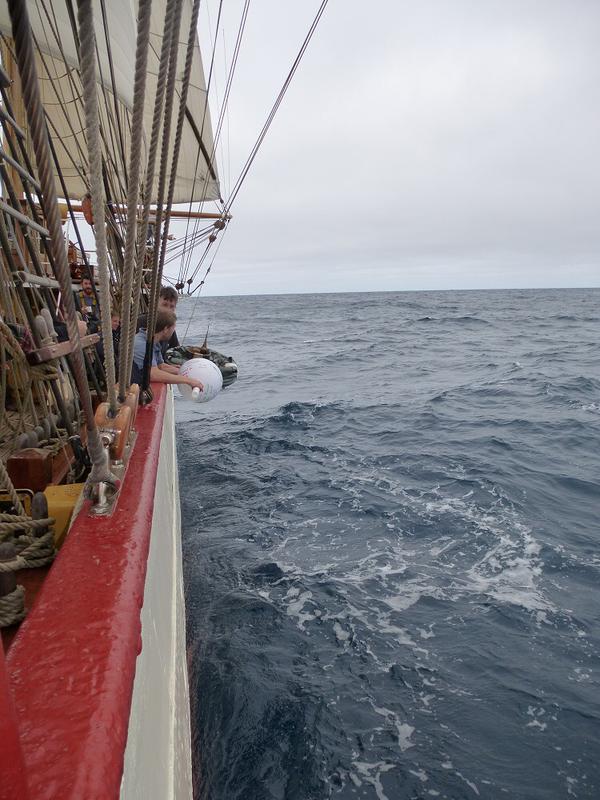 A drifting buoy being deployed from the Bark Europa off South Africa (credit: NOAA/AOML).
A drifting buoy being deployed from the Bark Europa off South Africa (credit: NOAA/AOML).

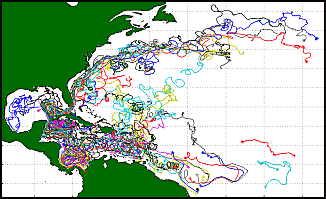 Map of drifter trajectories in the North Atlantic. (credit: NOAA/AOML)
Map of drifter trajectories in the North Atlantic. (credit: NOAA/AOML)
